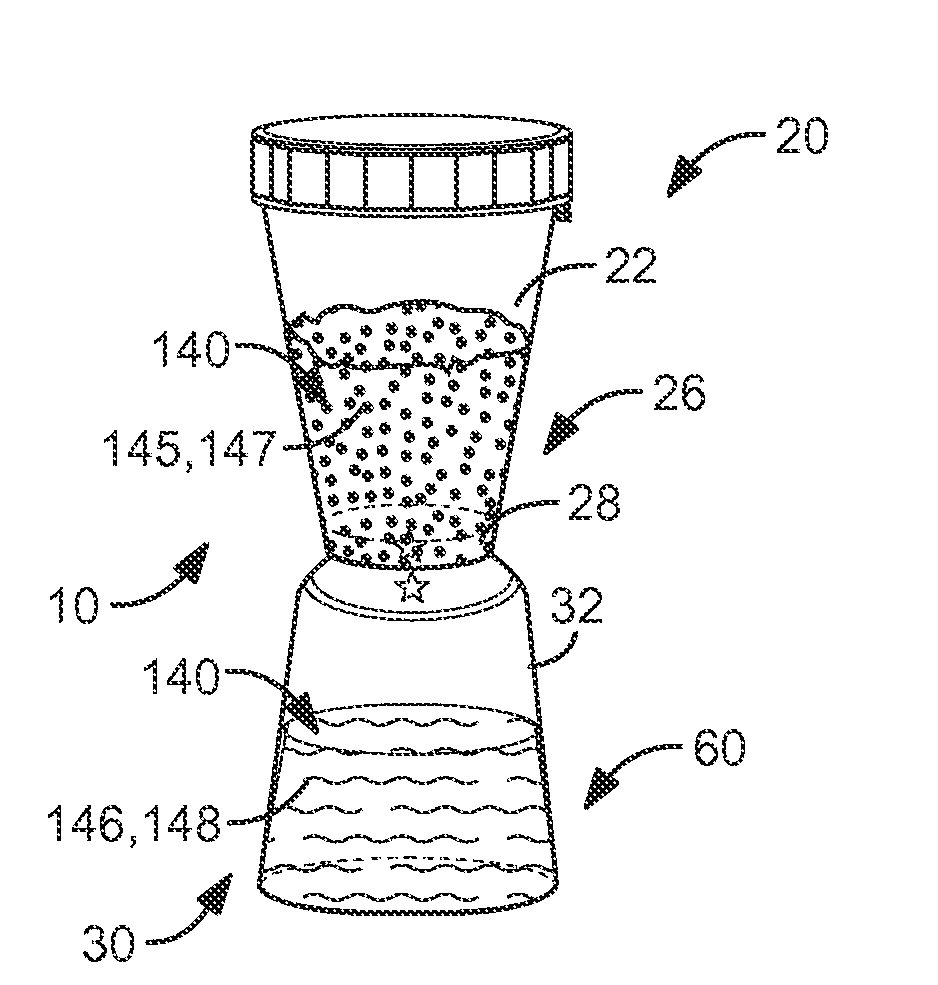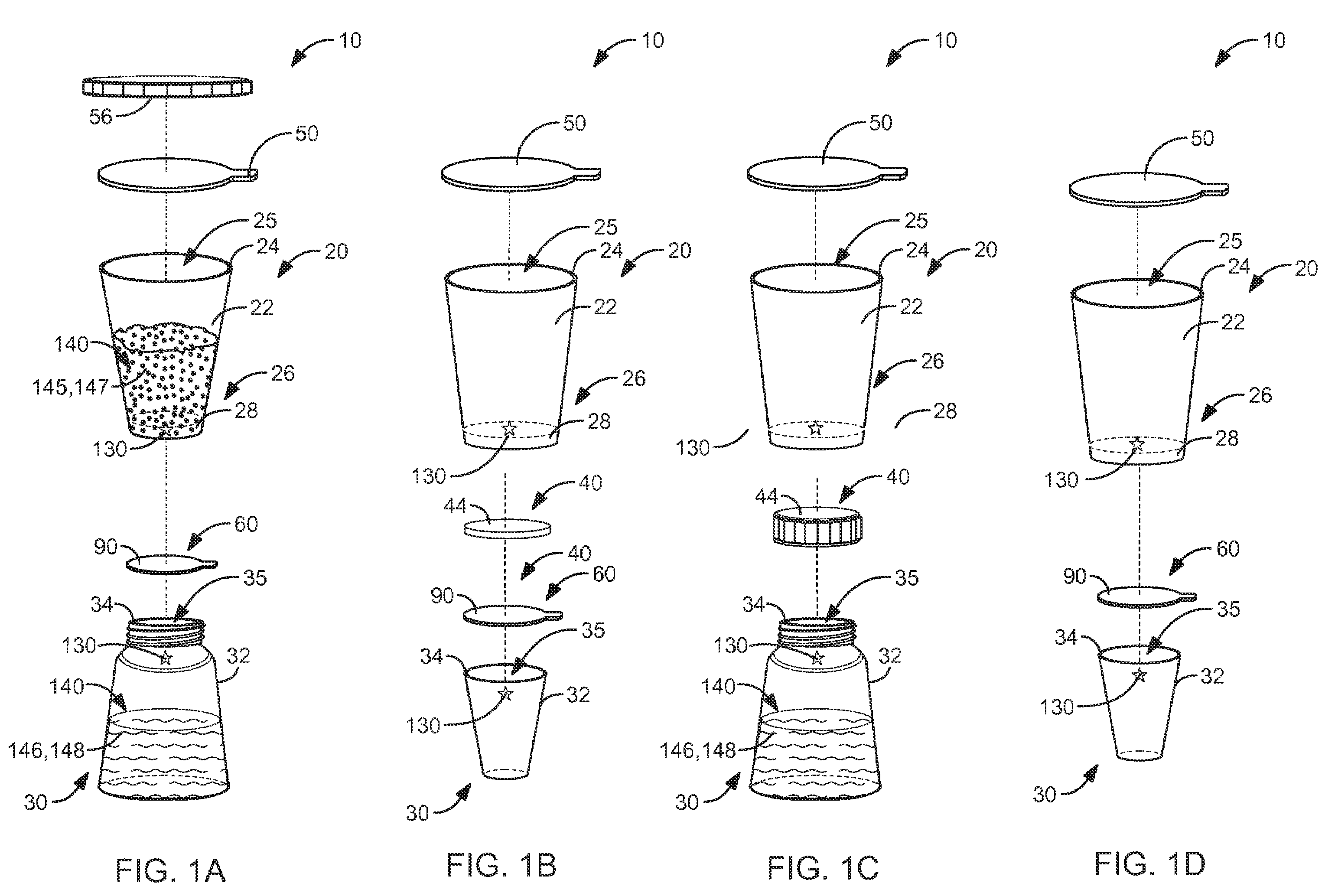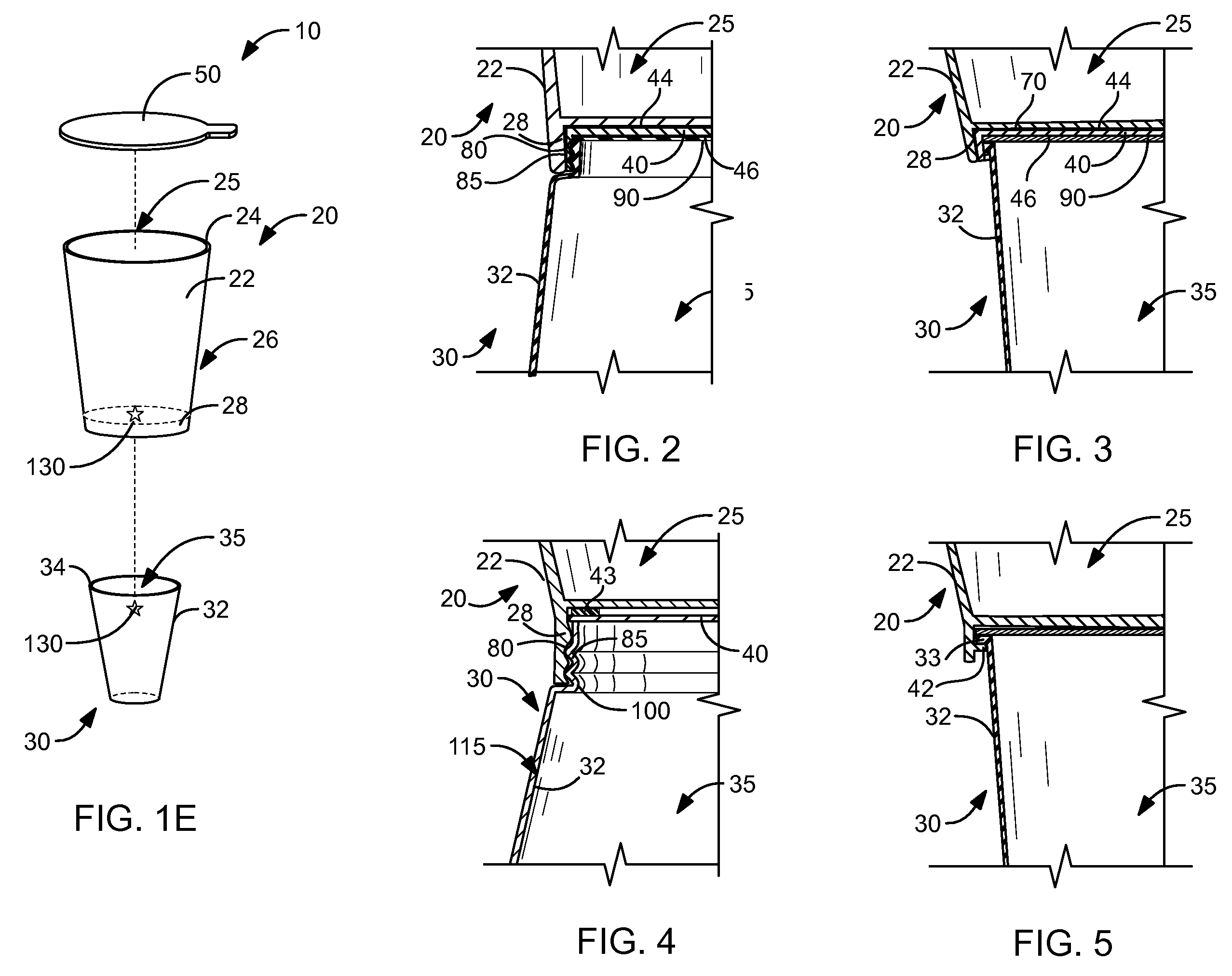Dual food container system and method for quick serving of complementary food items
- Summary
- Abstract
- Description
- Claims
- Application Information
AI Technical Summary
Benefits of technology
Problems solved by technology
Method used
Image
Examples
Embodiment Construction
[0035]FIGS. 1A through 1B illustrate a container system 10 comprising a first container 20 and a second container 30. In all embodiments of the invention, the first container 20 is selectively attachable to the second container 30. The first container 20 includes a housing 22 open at one end 24 thereof and defining an internal volume 25 therein. An attachable closure 50 seals the one end 24, and an optional snap-on or threaded lid 56 may further be included (FIG. 1A). Likewise, the second container 30 has a housing 32 open at one end 34 and defining an internal volume 35 therein. An attachable closure 60 for sealing the one end 34 may be included, such as a flexible plastic or foil closure sonically or adhesively sealed.
[0036]In the simplest embodiment of the invention, illustrated in FIGS. 1E and 6A, an attachment means 40 is formed in a second end 26 of the first container 20, and is adapted to receive and seal the one end 34 of the second container 30. In such an embodiment, the ...
PUM
 Login to View More
Login to View More Abstract
Description
Claims
Application Information
 Login to View More
Login to View More - R&D
- Intellectual Property
- Life Sciences
- Materials
- Tech Scout
- Unparalleled Data Quality
- Higher Quality Content
- 60% Fewer Hallucinations
Browse by: Latest US Patents, China's latest patents, Technical Efficacy Thesaurus, Application Domain, Technology Topic, Popular Technical Reports.
© 2025 PatSnap. All rights reserved.Legal|Privacy policy|Modern Slavery Act Transparency Statement|Sitemap|About US| Contact US: help@patsnap.com



